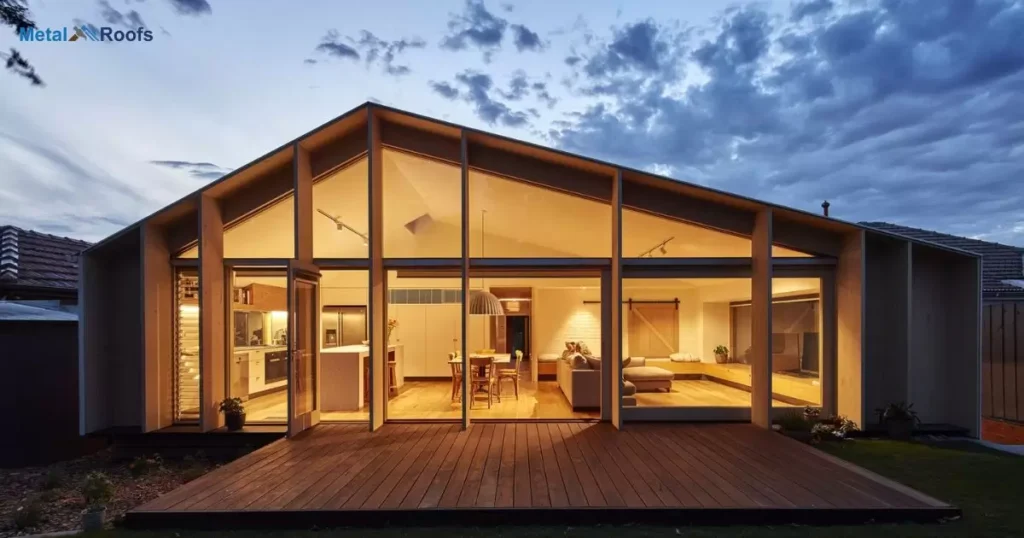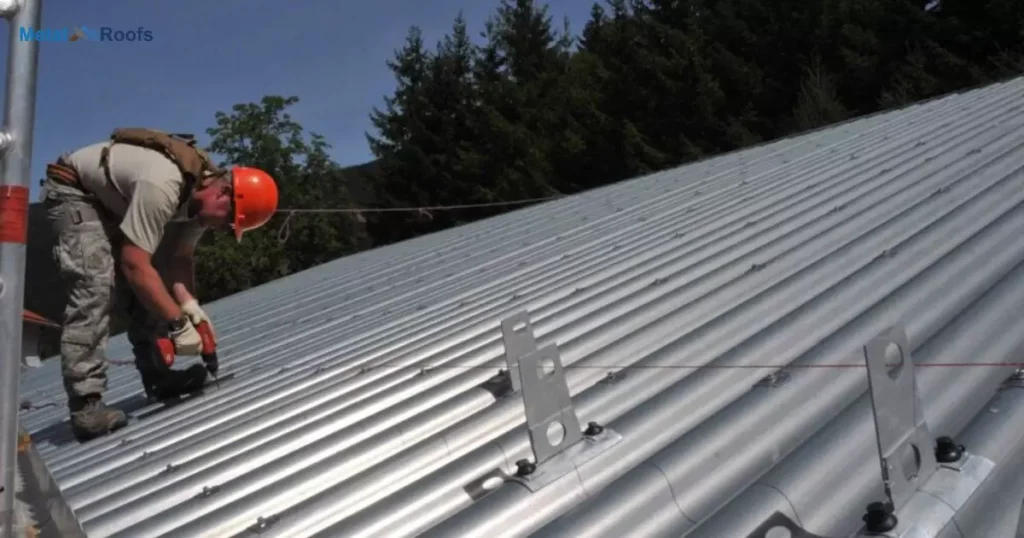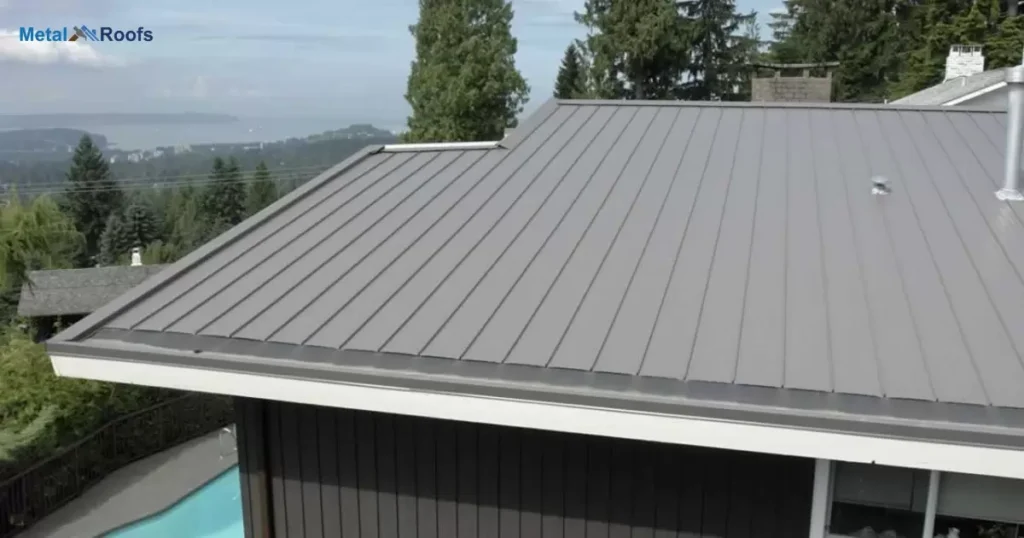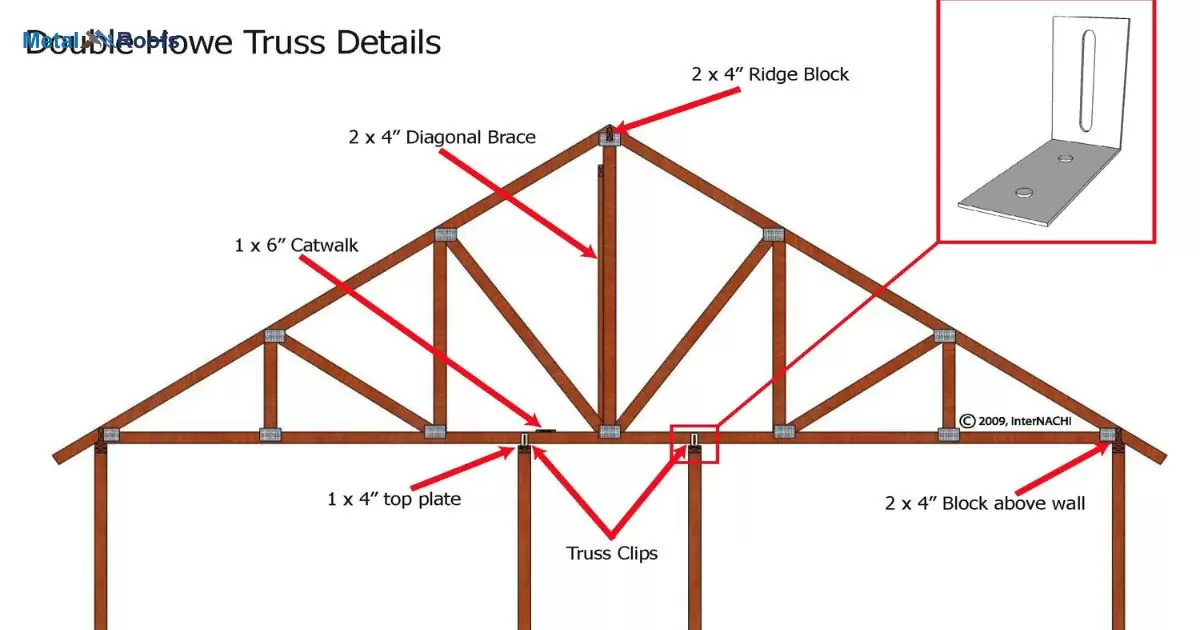Metal roofs need slope for water runoff. Minimum 3:12 pitch is recommended. Low slope risks water pooling. Steeper pitch allows quicker drainage. Climate influences ideal roof pitch. Warranties may require specific pitch. Improper pitch risks roof leaks.
Proper roof pitch is critical. Metal roofs require specific slope. Pitch affects drainage and longevity. How much pitch does a metal roof need? Depends on location and materials. Minimum 3:12 pitch recommended. Higher is better in harsh climates. Roofing experts can advise ideal pitch.
Roof pitch affects water runoff. Steeper pitch provides faster drainage. Climate impacts ideal roof slope. Snow and rain affect pitch needs. Low pitches risk water pooling. Pooling water damages metal roofs. Manufacturers set pitch requirements. A metal roof increase home value.
Key Takeaways
- Metal roof pitch depends on material, climate, and manufacturer.
- Minimum pitch often 3:12, but higher pitches may be needed for heavy snow areas.
- Consult a professional for the best pitch for your situation.
Roof Pitches
Roof pitches vary depending on factors like material and climate. Metal roofs typically start at a 3:12 pitch, but some areas may need steeper angles, like 4:12 or more, to handle heavy snow. It’s crucial to consult professionals to determine the right pitch for your location and roofing material.
They can assess factors like rainfall and snow load to ensure your roof performs well in all weather conditions. A well-pitched roof not only sheds water efficiently but also enhances the durability and lifespan of your roofing system. So, don’t hesitate to seek expert advice when planning your roof’s pitch.
Minimum Slope For Metal Roof
| Metal Roof Type | Minimum Slope Required |
| Corrugated Steel | 3:12 |
| Standing Seam | 2:12 |
| Metal Shingles | 3:12 |
| Ribbed Metal Panels | 1:12 |
The minimum slope for a metal roof depends on factors like the roofing material and local weather. Generally, metal roofs can go as low as 3:12 in pitch, but it varies. In areas with heavy snow, a steeper pitch might be needed, like 4:12 or higher.
This ensures water and snow runoff works well, preventing leaks. Consulting a roofing professional is crucial to find the best slope for your situation. They’ll consider your location and the specific metal roofing you’re using.
2/12 Roof Pitch

A 2/12 roof pitch means for every 12 inches of horizontal run, the roof rises 2 inches. It’s a shallow slope, often seen in modern architecture. With such a low pitch, metal roofing materials are still suitable. It’s crucial to consider factors like rainfall and snow load.
In regions with heavy precipitation, a 2/12 pitch might not be ideal without proper drainage systems. Consulting a roofing professional is wise to ensure your roof can handle local weather conditions effectively. They can recommend adjustments or additional measures for optimal performance and longevity.
Standard Roof Pitches
Standard roof pitches vary depending on factors like climate and roofing material. For metal roofs, a pitch as low as 3:12 is often acceptable. In areas with heavy snowfall, a steeper pitch of 4:12 or more might be necessary to ensure proper water and snow runoff. Always consult with a professional to determine the best pitch for your specific situation.
Other roofing materials, like asphalt shingles or tile, may have different pitch requirements. Generally, standard pitches range from 4:12 to 8:12 for most traditional roofing materials. Factors like local building codes and architectural design preferences also influence the choice of roof pitch.
Minimum Pitch For A Metal Roof
The minimum pitch for a metal roof varies based on material and climate. Generally, it can be as low as 3:12, meaning 3 inches of rise for every 12 inches of run. In regions with heavy snowfall, a steeper pitch, like 4:12 or greater, might be needed to ensure proper runoff.
Consulting a roofing professional is crucial to determine the best pitch for your specific situation. They can consider factors like local weather patterns and the type of metal roofing material being used. By getting expert advice, you can ensure your metal roof is installed with the optimal pitch for longevity and performance.
Pitch Required For Metal Roof

The pitch you need for a metal roof depends on factors like the material you choose and where you live. Generally, metal roofs can go as low as 3:12 pitch, but it’s wise to check with the manufacturer. In places with lots of snow or harsh weather, you might need a steeper pitch, like 4:12 or more.
This helps water and snow slide off easily, preventing leaks or damage. Always consult with a professional roofer to figure out the best pitch for your specific situation. They can assess your needs and recommend the right angle to keep your metal roof strong and reliable.
Minimum Slope For Corrugated Metal Roof
The minimum slope for a corrugated metal roof varies depending on factors such as the type of metal used and the local climate. Generally, a slope of at least 1:12 is recommended to ensure proper water drainage and prevent leaks.
In areas prone to heavy rain or snow, a steeper slope of 2:12 or higher may be necessary to effectively shed water and minimize the risk of water damage. It’s essential to consult with a roofing professional to determine the most suitable slope for your specific situation, taking into account factors like roof design and structural considerations.
Minimum Slope For Standing Seam Metal Roof
The minimum slope for a standing seam metal roof varies based on factors like material and local weather. Generally, a slope of 3:12 is acceptable, but some materials may require more. In snowy regions, a steeper slope of 4:12 or greater might be necessary for proper runoff.
Consulting a roofing expert ensures the ideal slope for your location and roof type. A suitable slope prevents water buildup and potential leaks. With the right pitch, your standing seam metal roof will offer long-lasting protection against the elements.
Low Slope Metal Roof

When considering a low slope metal roof, factors like material, climate, and manufacturer guidelines are key. The pitch required for such roofs generally ranges from 1/4:12 to 3:12. However, steep pitches (4:12 or greater) might be necessary in areas with heavy snowfall to ensure proper water and snow runoff.
Consulting a professional is crucial to determine the ideal pitch for your specific situation. Proper installation techniques are essential for low slope metal roofs to prevent water infiltration and ensure durability. With the right pitch and installation, a low slope metal roof can provide long-lasting protection for your home.
Frequently Asked Questions
Is A 1/12 Roof Pitch Ok For A Metal Roof?
The pitch needed for a metal roof depends on the material and weather. Usually, 3:12 is okay, but snowy areas might need steeper pitches. Consult a professional for guidance on your specific situation.
What Is The Pitch Limit For A Metal Roof?
Metal roofs typically handle pitches as low as 3:12, but areas with heavy snow might require 4:12 or more for effective runoff.
What Is The Minimum Pitch For Metal Roof Tiles?
Metal roof tiles usually require a minimum pitch of around 3:12, but areas with heavy snow may need steeper pitches for better runoff.
Conclusion
Determining the minimum pitch for a metal roof involves considering several factors. The type of metal roofing material, local weather conditions, and manufacturer recommendations all play a role. While a pitch of around 3:12 is common, areas with heavy snowfall may require steeper pitches, such as 4:12 or greater, to ensure adequate runoff.
Consulting with a roofing professional is essential to determine the most suitable pitch for your specific circumstances. They can provide expert guidance tailored to your needs, helping you achieve a durable and weather-resistant metal roof that meets your requirements.











